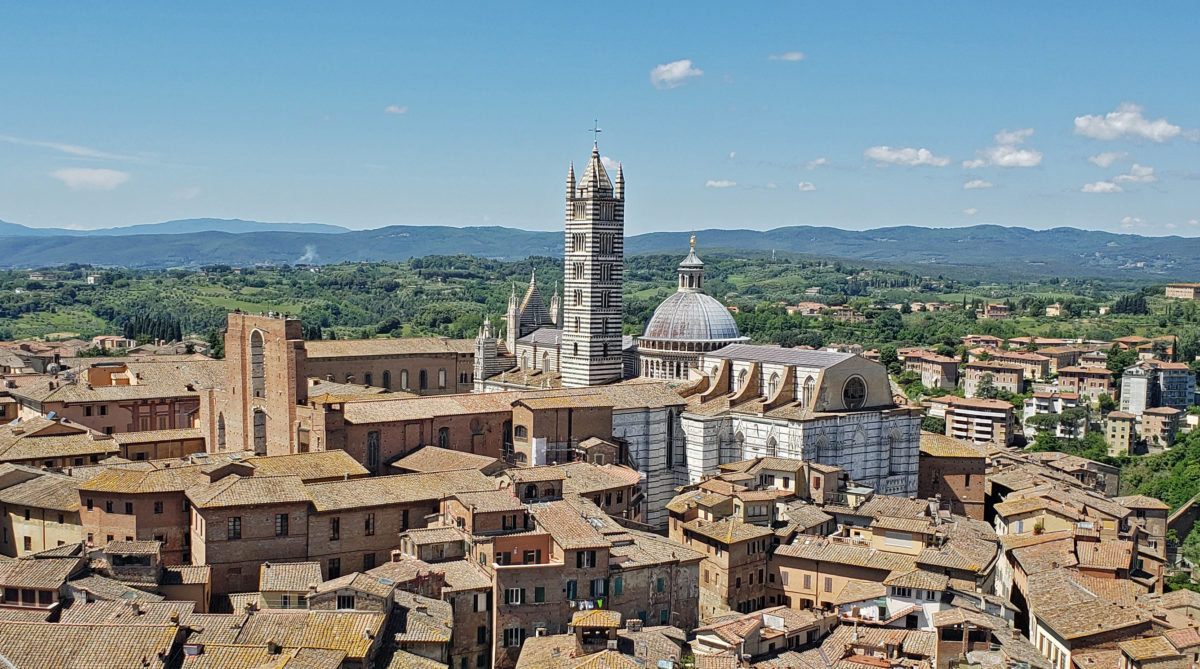Siena, Italy is a hilltop city in Tuscany, about 30 miles south of Florence. Siena was a medieval rival of Florence, on par with Rome, Genoa, and Venice. It ultimately lost out when Florentine forces captured the city in 1550. Florence became the political and cultural center of Tuscany, and Siena languished for centuries. But Siena’s loss is the visitor’s gain. While Florence flourished, Siena remained much as it had been in 1500, and the historical center (“centro storico”) retains much of its medieval character.
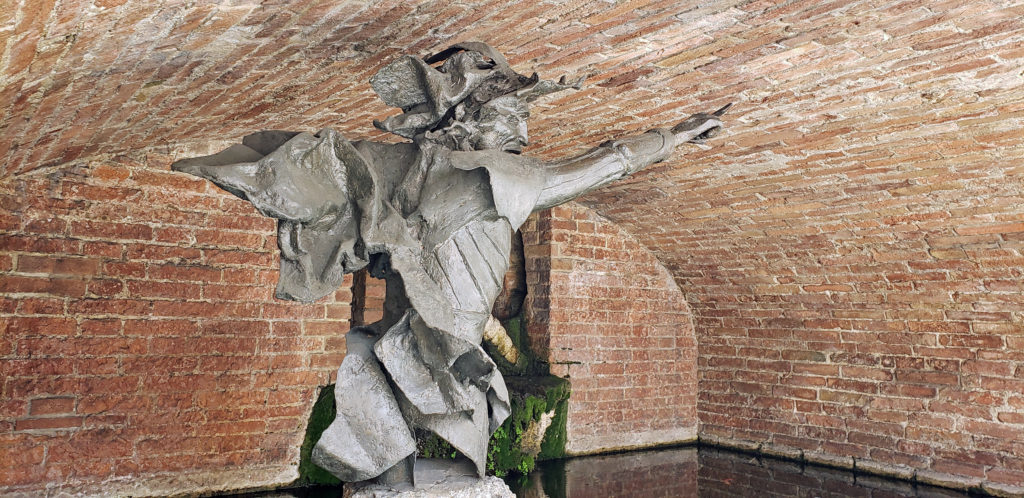
We traveled to Siena by train from Lucca. The train station in Siena lies at the base of the hill. Taxis are readily available to take you up to the main city, and there is a shuttle bus, also. The other option is a long series of indoor escalators (beginning in a shopping mall across from the station), which is what we took. From the top of the escalators it is a short walk to the Porta Camollia gate in the old city wall.
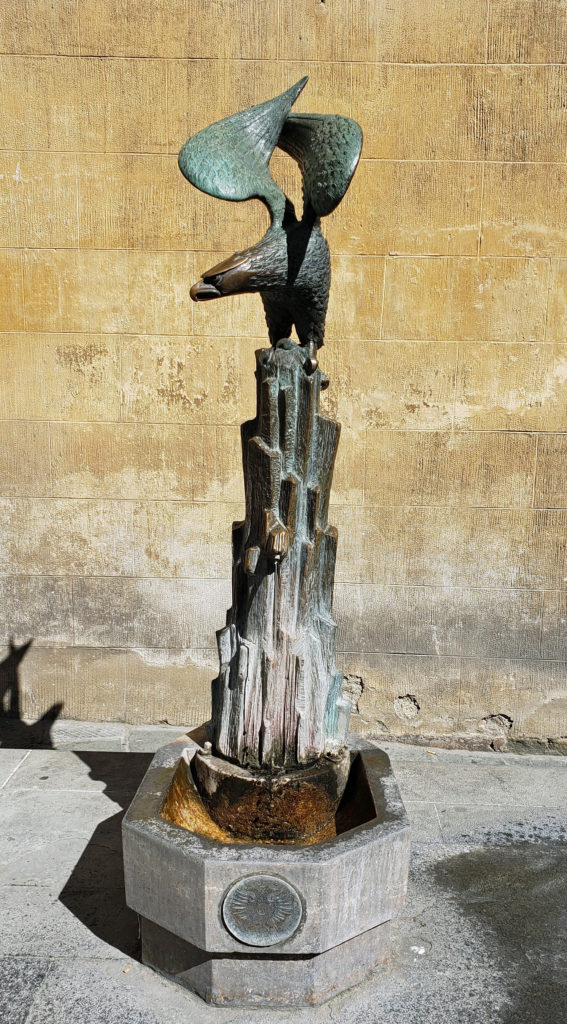
Our arrival happened by chance to coincide with the 2018 running of the Mille Miglia (“Thousand Mile”) classic car rally, which was passing through Siena that day. The city was full of old, and some not so old, exotic cars. Being a bit of a car guy, that was an unexpected bonus for me.
We found our Airbnb rental without a problem, but actually getting in took a couple of hours. The building door code that we were given didn’t work, but a resident let us in. The key was supposed to be in the door to our unit, and it was, but our unit was off a hallway that was behind a locked door. Calling the management company got us nowhere. Eventually, my wife made an international call to Airbnb back in the States, and they contacted the local people, who sent someone out to let us in. How they expected us to get past that locked door is beyond me. Another example of “this is Italy,” I guess. But once settled in, the rest of our visit was thoroughly enjoyable.

The cultural hearts of Siena are the Piazza del Campo and the Duomo di Siena. Both are within a few blocks of each other, making it easy to get at least a taste of Siena, even if you have only part of a day to spend there. Siena, at least the centro storico, is easily walkable. Vehicles are restricted to residents, taxis, and service vehicles. The hill top is roughly Y-shaped, with the three limbs radiating out from the Piazza del Campo (sometimes called Il Campo). The streets are narrow and winding, much like Lucca, and it isn’t difficult to get lost. But if you have a good map and are paying attention to where you’re going, it’s not difficult to find your way around.

Climbing the City Tower (Torre del Mangia), adjacent to Il Campo, will give you a birdseye view of the city and help you orient yourself. The tower is 330 feet tall and the climb is about 400 steps, so you need to be in decent physical condition, but the exertion is worth the effort, if you can manage it.
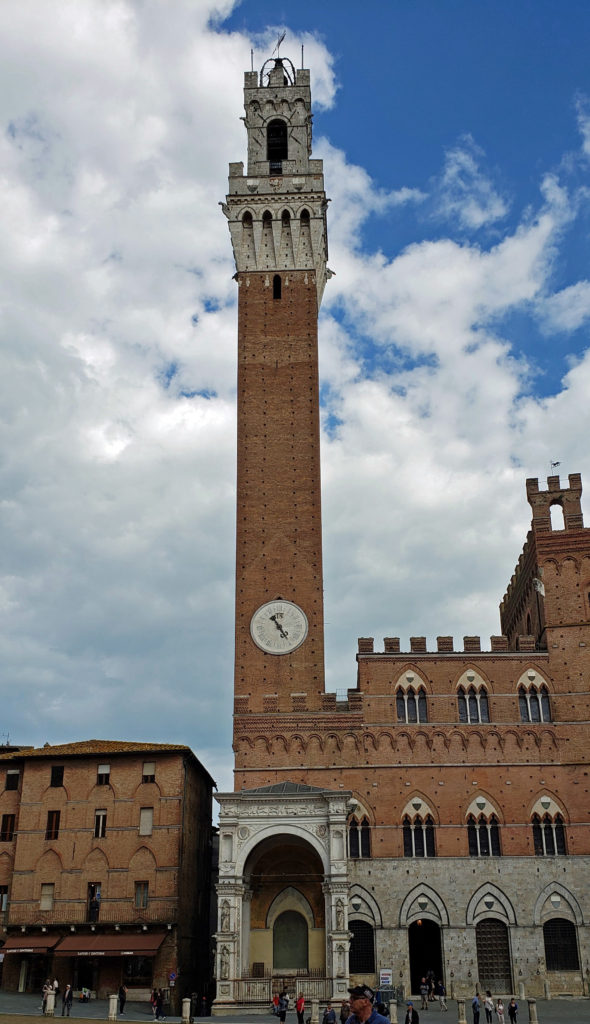
The Piazza del Campo is the civic center of Siena, and has been since the 13th century. It’s a great place to just sit and people watch, drink a glass of wine or pint of beer, and relax between your explorations. City Hall (Palazzo Publico) faces the plaza and houses the Civic Museum and provides access to the City Tower.
Directly across the plaza from City Hall is the Fountain of Joy (Fonte Gaia). The original fountain was built in the early 1400s and was a source of clean drinking water for the residents of Siena. What you see in the plaza is a copy, but the original fountain can be seen at the Santa Maria della Scala museum next to the Duomo, where it was moved to preserve it.


The Piazza del Campo is also the site of the famous Palio horse races that are held every summer. Each horse represents one of the 17 contrades (neighborhoods) in Siena and competition between the contrades is fierce. Winning the Palio is a very big deal in Siena.
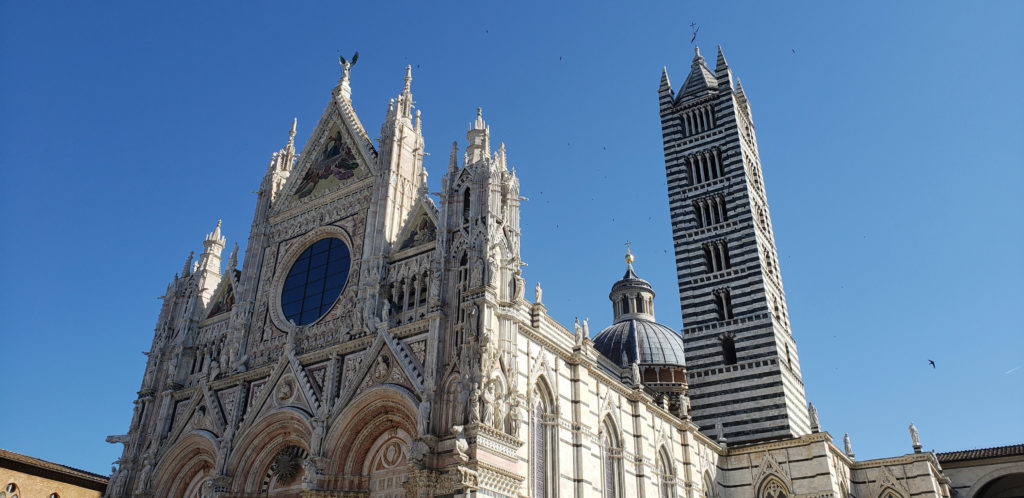
The Duomo di Siena, a few hundred yards west of Il Campo, is the religious heart of Siena. Built in the 1200s, the cathedral predates Florence’s grand Duomo. Plans to expand it to surpass Florence’s cathedral were scuttled by the Black Death that killed a third of the population in the 1350s. The expansion plan was never revived, but even as is, the Duomo is still plenty grand.
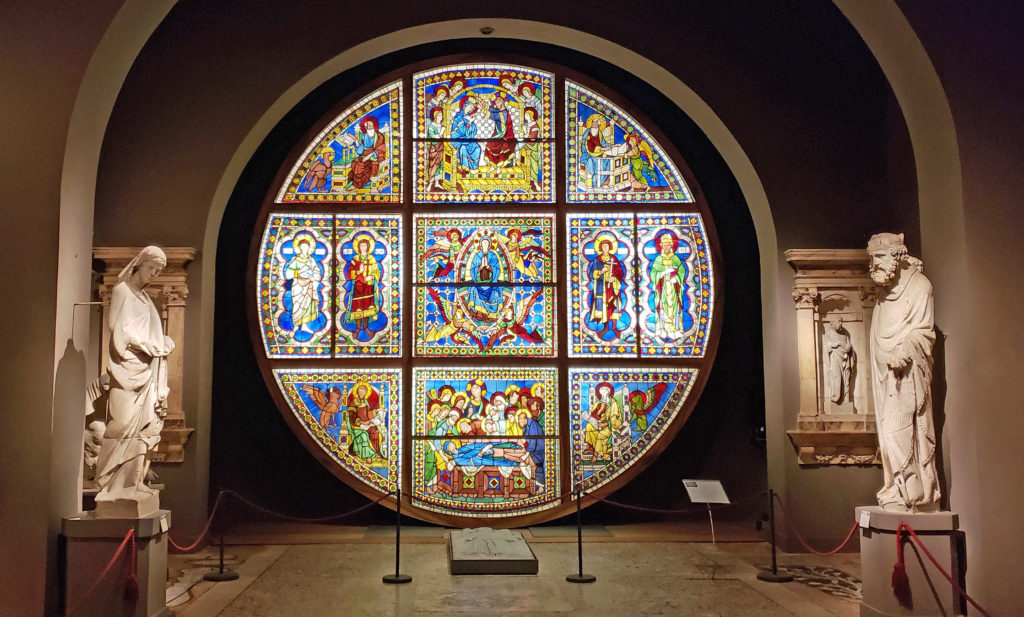
A woman we met in Cinque Terre earlier in our trip told us that the Duomo in Siena is the second most beautiful church (after the Vatican) that she has ever seen. I don’t know if I would go that far, but it is definitely impressive and worth a few hours, or even a half a day, to see all that it offers. The Duomo Museum and the cathedral are absolute must sees if you’re visiting Siena.
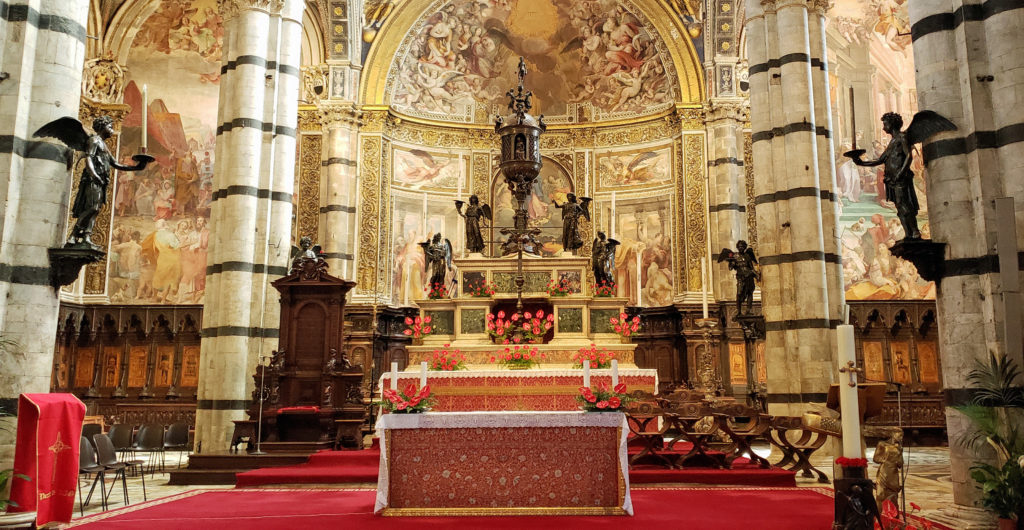
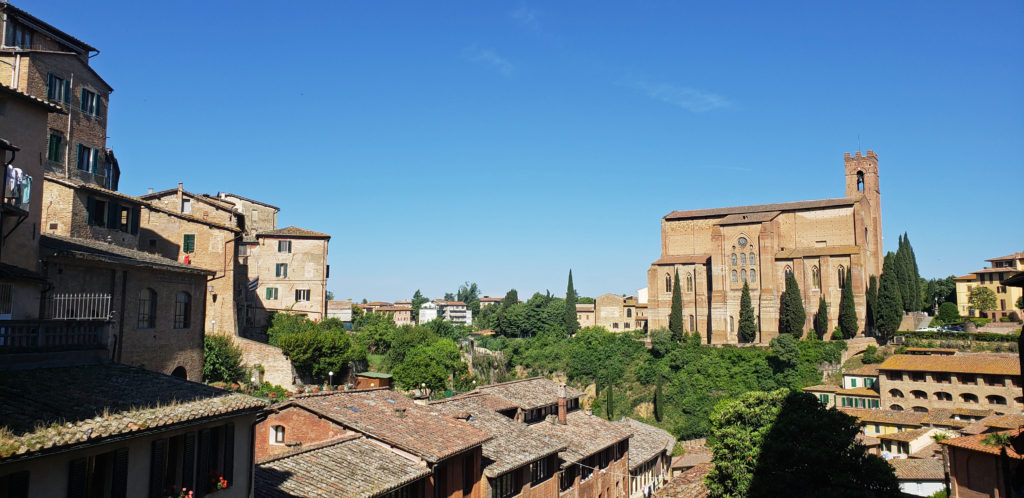
We spent most of our two days in Siena wandering around with no set agenda. It’s just a magnificent city, and everywhere you go you will find something worthwhile to see or do. There are lots of interesting little shops and art galleries, scenic streets and alleys to explore, and of course, plenty of cafes and restaurants for you to sample the local cuisine. We largely ignored the guidebooks and just picked cafes that looked interesting to us, and we didn’t have a bad meal at any of them.
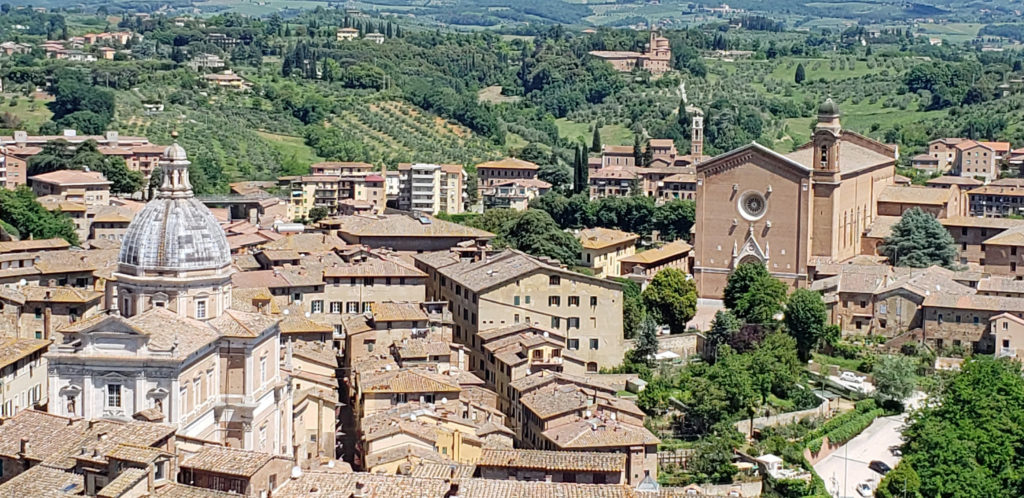
One of our wanders took us to the Basilica di San Francesco and the adjoining Oratoria di San Bernadino. Both the buildings and grounds are strikingly beautiful, and we lingered for what seemed like hours. And I’m sure there are many other churches in Siena that are just as beautiful. In fact, I don’t think there is anyplace in the centro storico that is not beautiful.
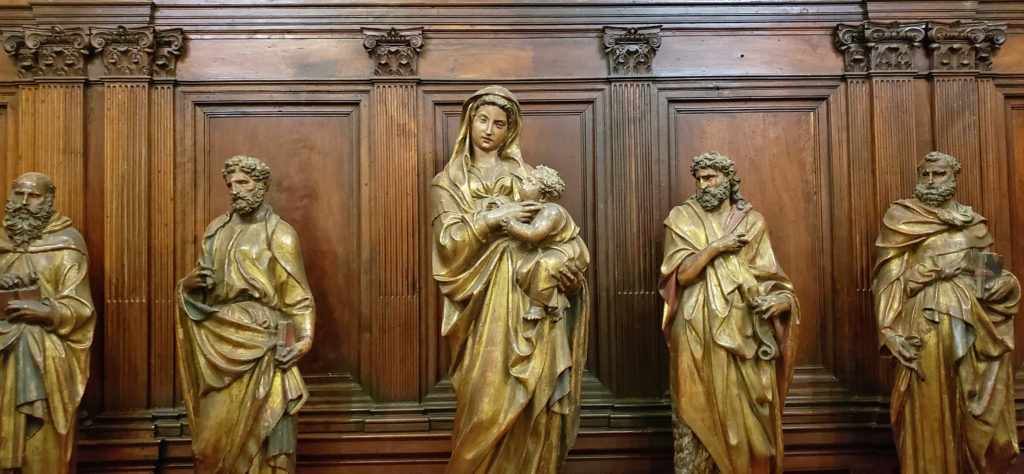
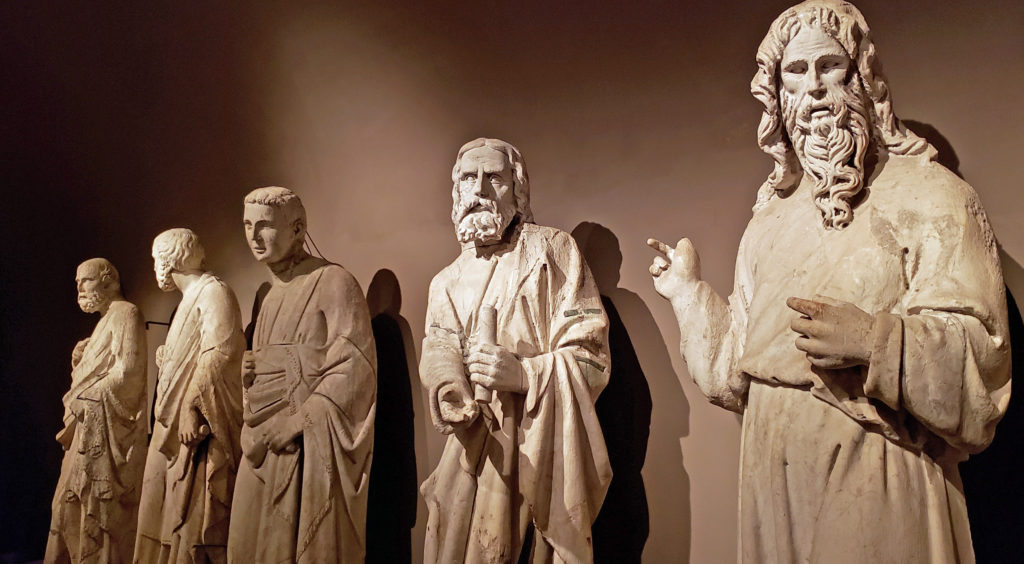
If you’re interested in the history of Siena, the Civic Museum, the Duomo Museum, and the Santa Maria dell Scala museum are must visits. And if you are interested in the art of Siena, be sure to check out the Pinocoteca Nazionale and the Museo dell’Opera Metropolitana, both near the Duomo.
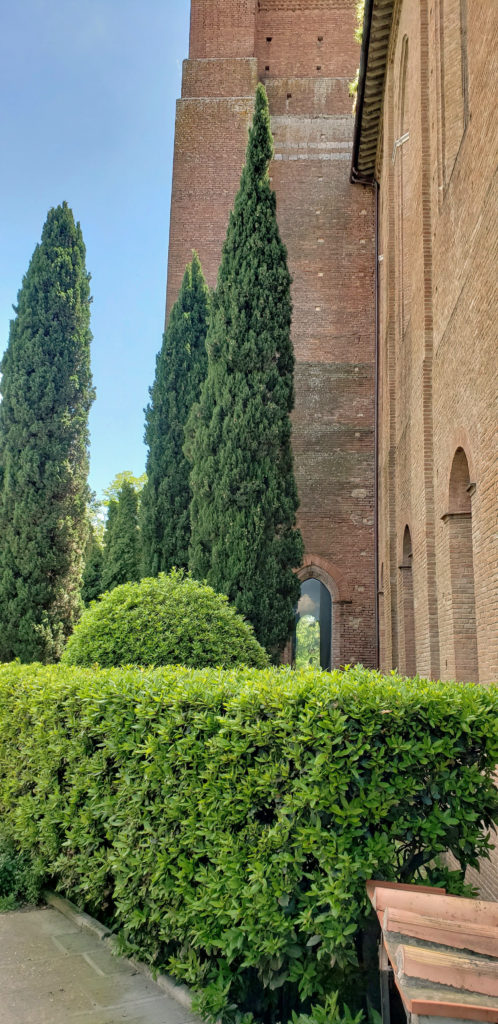
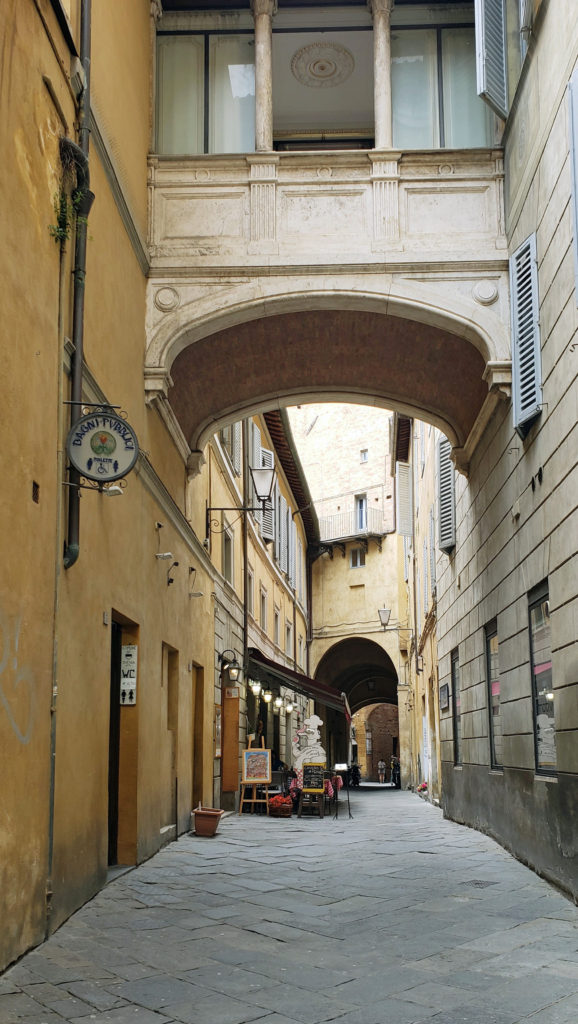
We were able to explore only a small fraction of the city, but Siena is so beautiful and so charming that we would love to return some day and spend more than just two days there. While Lucca has a very interesting and largely authentic centro storico, Siena’s is equally interesting and authentic, and it’s burnt sienna colored brick buildings and dramatic hilltop location make it more beautiful and give it more charm than Lucca. And while it doesn’t have Florence’s art and cultural heritage, I would pick Siena over Florence if I could only revisit one.
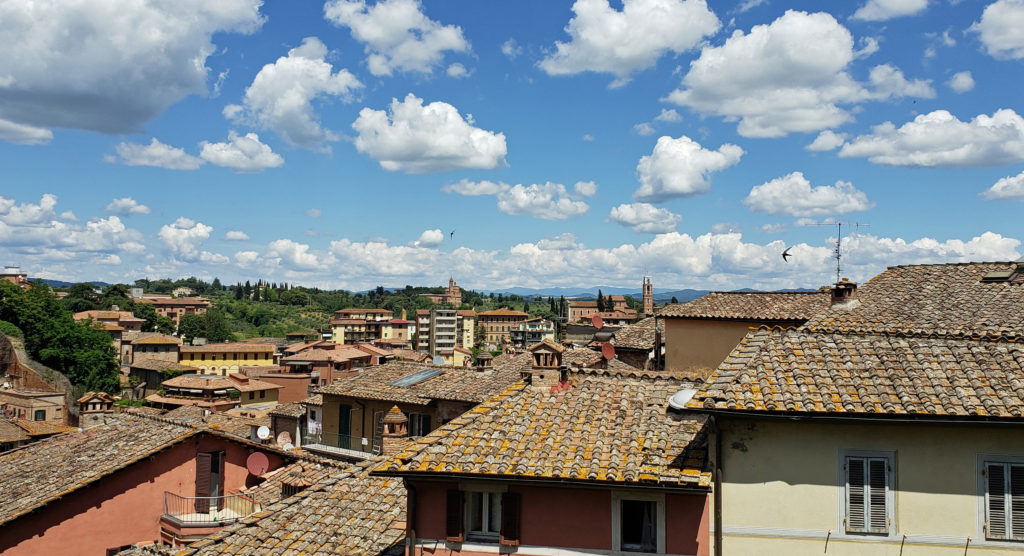

Our trip to Italy began with five days in Cinque Terre, followed by two in Lucca. Following our visit to Siena, we spent another five days in Florence, soaking up the history, art, and culture of the city, and literally walking in the footsteps of Leonardo da Vinci and Michelangelo. Trip of a lifetime.

Originally posted October 10, 2018 by Alan K. Lee
Updated and re-posted April 18, 2021 and June 11, 2023
All photos © Alan K. Lee

